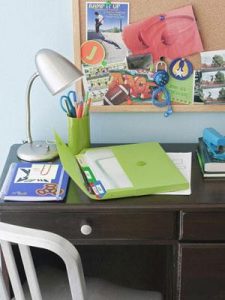 A key challenge many families have in working together in an organized and efficient way is getting the children in the family to be a part of this process. Parents can focus their efforts on decluttering and rearranging the home in a way that facilitates a better and more enjoyable family life, but if the kids in the house do not sign on with this goal, little will change for the family as a whole.
A key challenge many families have in working together in an organized and efficient way is getting the children in the family to be a part of this process. Parents can focus their efforts on decluttering and rearranging the home in a way that facilitates a better and more enjoyable family life, but if the kids in the house do not sign on with this goal, little will change for the family as a whole.
How to make it easier to get your kids to clean their room
In changing the dynamic with messy or disorganized kids, it’s important to realize that allowing them to maintain bad habits is keeping them from achieving their highest potential – in all areas of life. Mothers and fathers often fall into a pattern of picking up after their kids, fixing their mistakes or covering for them.
This may be done out of love or because they want their families to “look good,” but, in the long run, if children do not learn these skills, they will be ill-prepared to take on other challenges life will throw at them. An organization is not about maintaining an appearance: it’s also about creating an environment that will aid in productivity and well being. While instilling good habits into children can begin very early on — even toddlers can help pick up their toys and put them in the toy box — as children begin to become more independent, parents’ efforts should really focus more on this goal.
Five-year-olds can, and should, be expected to make their beds in the morning and to keep their own spaces clean. Children learn to be responsible and feel capable of doing tasks that are within their skill sets and doing them repeatedly and on their own. So how do you get kids, particularly unwilling ones, to participate in chores and maintaining household order?
How professional organizers help kids build good habits
Ellyn Elstein, a professional organizer also known as “The Closet Lady” advises parents to give their children their own organizational space, whether that’s a closet or a basket or other tool, and to use coding as a tool for teaching them how to order. What ‘coding’ means is putting labels on different containers, shelves, drawers, and closet areas to designate that space should be dedicated to certain articles of clothing, school supplies, and toys.
This can be through colors, shapes, special stickers, or text for older children who know how to read. You can also use different types of labels for your different children, so each of them knows what belongs to them. Make it fun and personal to boost their enthusiasm about becoming tidier. “Most parents think, ‘Ok, my kid is sloppy, it doesn’t really make any sense to spend money to organize his closet,’” Elstein says. “But they’re often being unrealistic.
If they don’t give their children organized space, they shouldn’t expect that they will put things away properly. Children love having [their own] space, and if they know where to put things, they can really work things out themselves.
If parents can get their kids to buy into the concept of organization, once they’re organized in that way, they’ll become almost addicted to it.”
When Elstein works with children, she teaches them how to fold clothes and asks them to explain to her in detail how they use their closet space. She speaks to them one on one, so she can teach them better organization, walking them through it step by step. “Parents don’t always see things from a child’s perspective. For example, a closet with just one rod is rather inefficient. The child might not be able to reach that rod, so they will put things on the floor. If you organize the space better based on their limitations, they – and you – will have an easier time.”
She has not only worked with many special needs children, but has raised two children with ADHD and dyslexia to adulthood using these methods. Even if your child has a tough time staying focused on what’s usually a ‘boring’ task, going about it in the right way will improve your results.
Elstein emphasizes that if a child has any sort of learning disability, you have to help them code appropriately to get organized. “It’s easy if you give them coded space for everything, and once they’ve learned the system of coding, you can bring the same organizational system to a new place – to the classroom, for instance. If you teach children how to organize correctly, they’ll do it. It also gives them skills for studying. And if kids are organized in how they study, their skills will be better as well.”
Practical neatness tips for your children
Children can use a number of organizational strategies for tackling school and studying, including assigning colors to certain subjects or tasks, providing and labeling folders, bins, and shelves, as well as giving them ADHD-friendly tools like staplers, three-hole punches, or binder clips, keeping a second set of books and study materials at home, patterning preparing for the next day the night before, and encouraging the use of a daily planner or notebook.
Most people — not just children — would succeed more if they took the time to implement these kinds of measures in their own lives. It’s not hard to see how having the right materials when they are needed would lead to better performance on homework, tests, and in school in general.
The final important thing for parents to remember is that children learn by example, so while expectations and reminders are part of the process, showing them how an organization can be enjoyable and lead to more positive outcomes so it should be a major focus in building this – or any – skill set. All people can learn to benefit from organizational skills; children certainly included.


